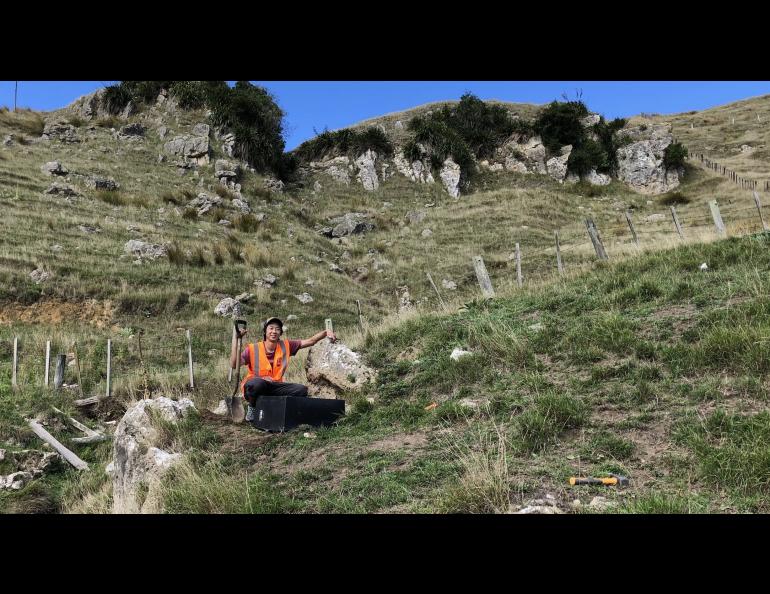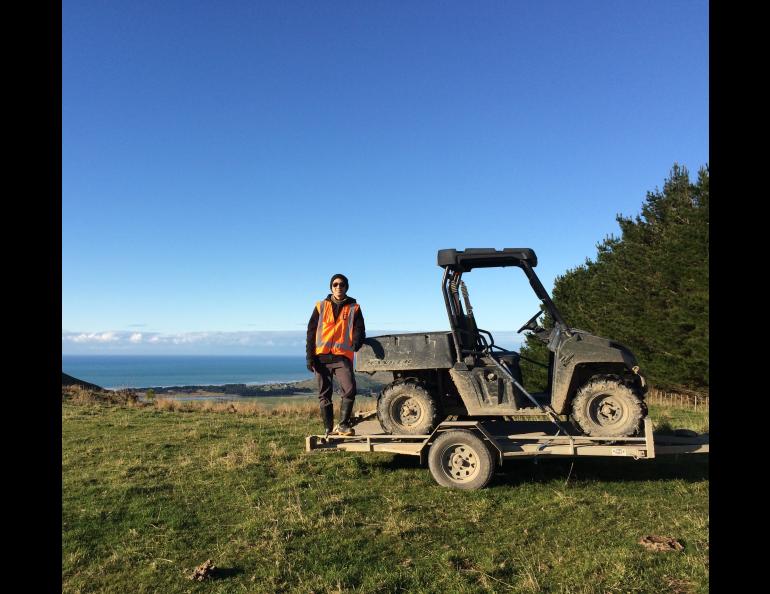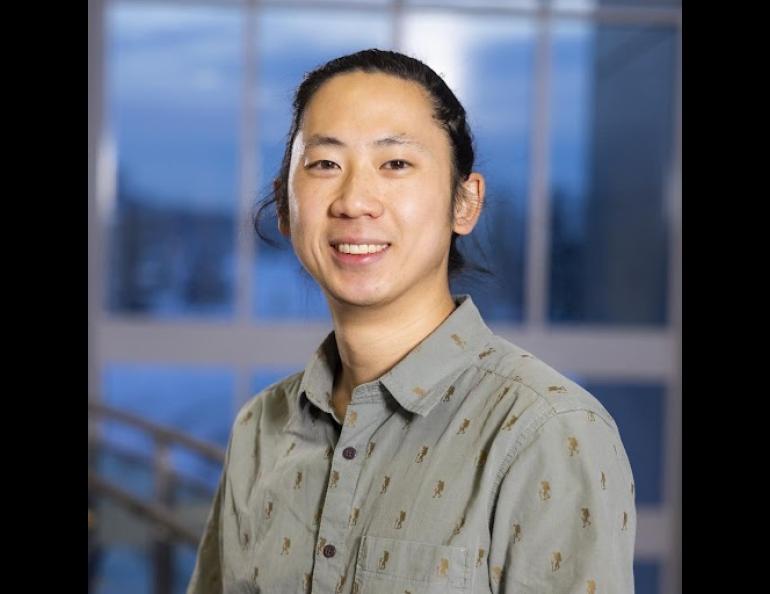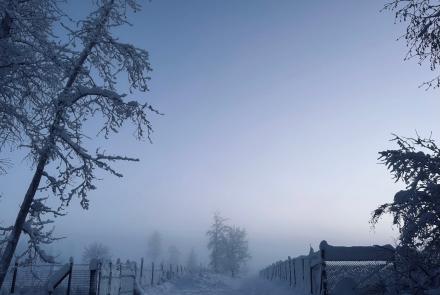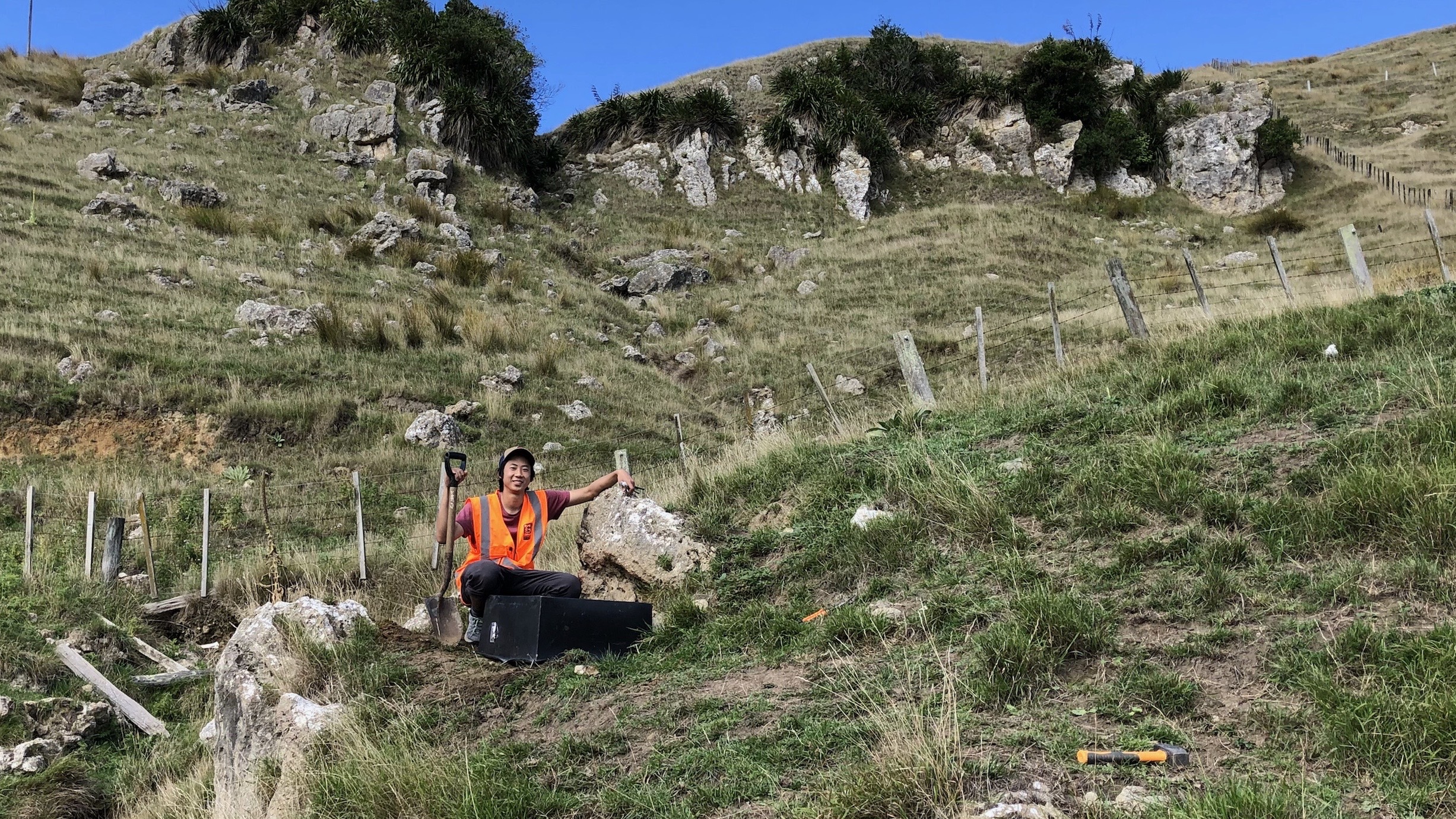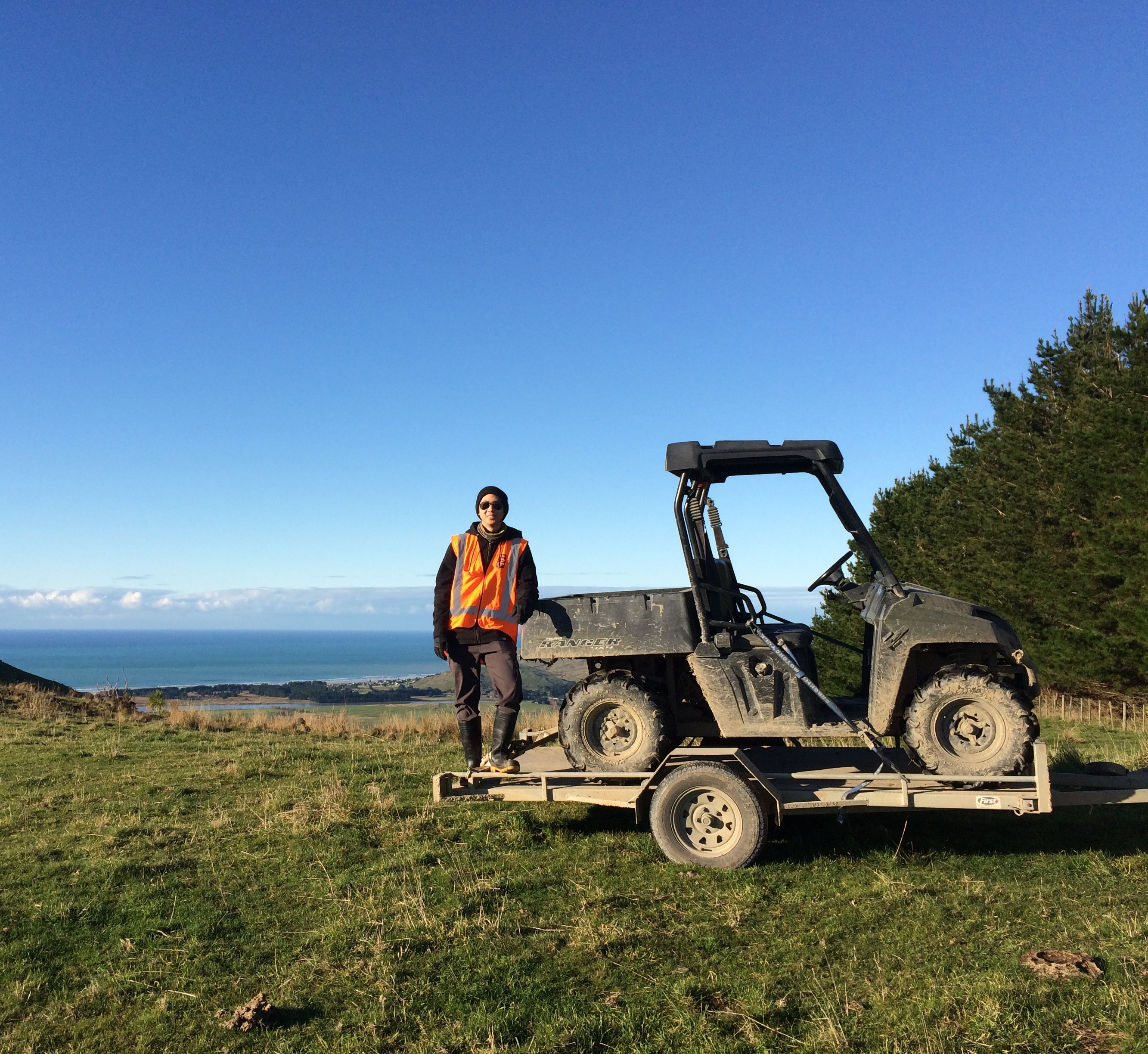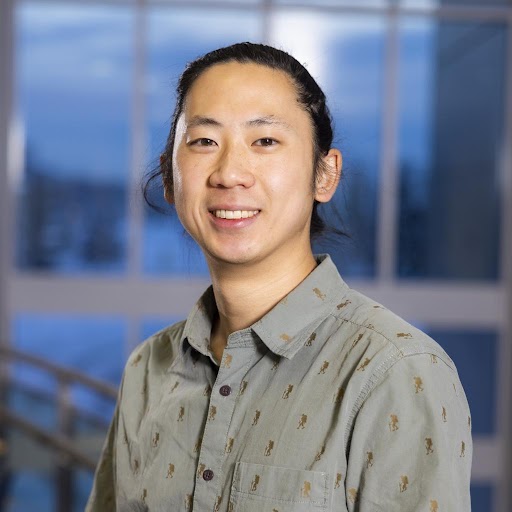Assistant Professor Bryant Chow of the University of Alaska Fairbanks has received the Geoscience Society of New Zealand's top honor for his research aimed at better understanding the susceptibility of that nation’s North Island to a catastrophic earthquake.
The New Zealand Geophysics Prize is the society’s highest award and is given to the author or authors of “the most meritorious eligible publication in the field of geophysics” for research conducted in New Zealand, carried out principally by a New Zealander or pertaining to the New Zealand region, the award criteria reads.
New Zealand sits on the Australian Plate, but the nation’s eastern edges are near where the westward-spreading Pacific plate slides beneath the Australian plate. The region is known as the Hikurangi Subduction Zone and was the focus of Chow’s research.
“The big reason for studying it in such detail is because they haven't historically recorded a really large subduction earthquake on it,” said Chow, who teaches in the UAF College of Natural Science and Mathematics and also works at the Wilson Alaska Technical Center at the UAF Geophysical Institute.
“If a quake greater than magnitude 7 or 8 happened, it would be truly devastating for that country because they are right on top of the subduction zone,” he said.
Approximately 75% of New Zealand’s 5 million people live on North Island.
The Hikurangi Subduction Zone is known for its seismic activity and poses a significant earthquake and tsunami risk to New Zealand. Understanding the dynamics of the subduction zone is crucial for the safety and preparedness of the population.
In presenting the award, the Geoscience Society of New Zealand said Chow’s work “has revealed the extent of slow velocities associated with volcanism in the Taupō Volcanic Zone, the relation between basement geological terranes and seismic velocities, and heterogeneity in overriding plate materials along-strike of the Hikurangi subduction zone which challenges past ideas about fluid enrichment in the overriding plate, and a possible structural boundary within Cook Strait bounding a deep km-scale basin.”
The Taupō Volcanic Zone, associated with the Hikurangi Subduction Zone, is the most frequently active and productive silicic volcanic system on Earth, according to the U.S. Geological Survey. The volcanic zone reaches from the Bay of Plenty in the northeast of North Island and extends to the island’s center.
Chow’s research was published in two papers, one outlining creation of the computer model used to identify telltale velocity changes in upper plate structure and the other showing the use of that model to reveal two previously unknown seamounts at the subduction zone and discussing their impact on seismicity. The work came from his time as a doctoral student in New Zealand.
Chow studied the Hikurangi Subduction Zone using adjoint tomography, which produces 3-D models based on the optimal matching of observed and simulated seismic waveforms.
“We wanted to have some better ideas about what's going on in the subduction zone so that, along with other known geophysical evidence, we can understand whether a large earthquake can occur there,” he said.
Attention focused on the seamounts, which are underwater mountains or elevated geological features of volcanic origin that rise prominently from the ocean floor but do not reach the water's surface.
Seamounts have been identified at various stages of subduction and are thought to either promote or suppress the occurrence of large earthquakes, Chow writes in the 2022 paper presenting evidence of the subducted seamounts.
“The takeaway message is that in the northern section of this subduction zone there are more seamounts and less sediment and that the central and southern sections have more sediment cover and therefore fewer apparent seamounts,” Chow said.
The research led Chow to propose that the northern section seamounts, not covered with sediment, have permanently damaged the overriding Australian plate. The damage has reduced the plate’s ability to store energy and host large earthquakes.
“The seamounts coming in on the Pacific plate and pushing into and under the Australian plate may actually help relieve stress in the system by facilitating the initiation of smaller-magnitude earthquakes or swarms of earthquakes,” he said. “That release might be enough to prevent large-magnitude earthquakes from happening.”
It’s a different story in the subduction zone’s central and southern portions, where seamounts are covered by thick sediment layers.
“We have the hypothesis that this type of section is actually a lot more capable of accumulating stress because you have a lot more surface area of the two plates in contact,” Chow said.
Chow obtained his Ph.D. in geophysics from Victoria University of Wellington in 2021 and his master’s in geophysics from Ludwig Maximilian University of Munich in 2017. He was a National Science Foundation postdoctoral fellow at UAF from 2021-2023, researching the active tectonics and crustal structure of northern Alaska. He became an assistant professor at the conclusion of the fellowship.
